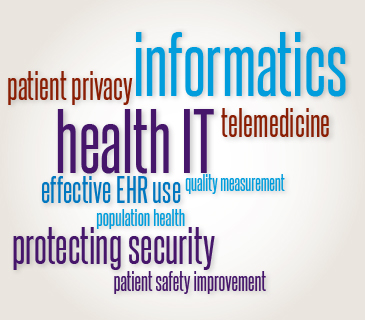How can tomorrow’s physicians integrate technology into their practice beyond simply using electronic health records (EHR)? One medical school outlined exactly how physicians of the future can be adept at making technology work for them.
 As part of its undergraduate medical education transformation, Oregon Health and Science University (OHSU) School of Medicine identified competencies medical students should have surrounding informatics, or using technology to provide better care to patients. This extends beyond using an EHR system, according to a recent article from the institution in Advances in Medical Education and Practice.
As part of its undergraduate medical education transformation, Oregon Health and Science University (OHSU) School of Medicine identified competencies medical students should have surrounding informatics, or using technology to provide better care to patients. This extends beyond using an EHR system, according to a recent article from the institution in Advances in Medical Education and Practice.
“The health record is no longer a passive collection of information used mainly to justify billing,” the article said. “Rather, it is a source of data, organized into coherent information that allows the health care team to deliver the best, safest and most cost-effective care.”
The school assembled a team to identify 13 competencies in clinical informatics. The team mapped each competency to the six competency domains for residents defined by the Accreditation Council for Graduate Medical Education, then developed learning objectives and milestones to achieve each competency in the continuum of medical education. The skills defined by the new curriculum include:
- Finding and applying information to patient care and other clinical tasks, including how to choose the best online source for a specific task, evaluating information sources to determine whether they are high-quality and formulating answerable clinical questions
- Effectively using an EHR, including recognizing medical safety issues related to poor chart maintenance, creating usable notes and comparing results over time
- Using information to improve patient safety, including performing a root-cause analysis to uncover patient safety problems and then using resources to solve the issue
- Engaging patients to improve their health and care delivery through a patient portal, including electronic communication with patients and integrating technology into patient education
“The 21st-century clinician must have a basic understanding of informatics issues, such as capturing data that is correct and complete as well as consistent in its expression,” the article said. “He or she must be able to work in partnership with informatics professionals to achieve what we know is so critical in the application of informatics: adhering to standards, achieving system interoperability, appropriately and optimally implementing clinical decision support, and maintaining security to assure privacy and confidentiality.”
The curriculum transformation at OHSU is part of a grant project under the AMA’s Accelerating Change in Medical Education initiative. OHSU and 10 other schools are working to reinvent traditional medical education by incorporating elements such as competency-based assessment, team-based care and informatics into daily training. The 13 informatics competencies are already being integrated into OHSU’s new curriculum, which begins next week.
Competencies in clinical informatics
- Find, search, and apply knowledge-based information to patient care and other clinical tasks
- Effectively read and write from the electronic health record for patient care and other clinical activities
- Use and guide implementation of clinical decision support
- Provide care using population health management approaches
- Protect patient privacy and security
- Use information technology to improve patient safety
- Engage in quality measurement selection and improvement
- Use health information exchange to identify and access patient information across clinical settings
- Engage patients to improve their health and care delivery though personal health records and patient portals
- Maintain professionalism through use of information technology tools
- Provide clinical care via telemedicine and refer those for whom it is necessary
- Apply personalized/precision medicine
- Participate in practice-based clinical and translational research




